The Austrian brand Pro-Ject has earned a solid reputation towards audiophiles, due in large part to a selection of vinyl turntables satisfying all the needs of its fans, whether with moderate or high demands—but also thanks to many achievements in compact design, divided in multiple lines of products sharing the same name, Box Design, which now also include speakers and headphones.
The Pre Box DS2 Analogue preamplifier, which will be the focus of this testing ground, belongs to the manufacturer’s DS2 Line, and will be the ideal partner of the Amp Box DS2 power amplifier, with its 2 x 100 W in Class D (pulse-width modulation amplification), or any equivalent system, or even active speakers. Its five analog inputs can be used to connect any source you already have or add any other element from the DS2 Line, like the DAC Box DS2 Ultra digital-to-analog converter (soon to be tested in our columns), or the Phono Box DS2 USB preamplifier. The Pre Box DS2 Digital can also be found in the DS2 Line.
Presentation
As with all the other products from Pro-Ject, the DAC Box DS2 Analogue preamplifier appears as a simple parallelepipoid aluminum box, either in natural satin or black finish. Wood sidings are available to add a touch of luxury to this box, and will make you remember the Hi-Fi products from the 70’s.
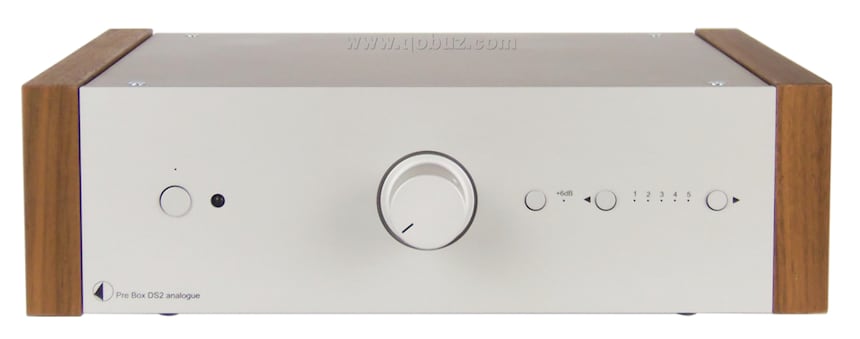
Its striped-down facade displays discreet silkscreen printing, an On/Off pushbutton switch topped by an unobtrusive blue LED on its left side, and the remote’s infrared signal receiver on its left. The remote allows for the powering and shutting down of the device, as well as controlling the volume and selecting the input by its number.
In the middle of the facade, you can find the volume button, large enough to be handled well without being too big. Then a little key enables a gain of 6 dB (x 2), with a discreet blue LED, and two other keys, surrounding five little blue indicators numbered from 1 to 5, permit the selection of the five potential sources, in ascending or descending order.
Connectivity
On the rear side of the Pro-Ject Pre Box DS2 Analogue, you can find five stereo analog RCA inputs, two stereo RCA outputs (one at fixed level and the other at variable level), as well as a subwoofer RCA output.
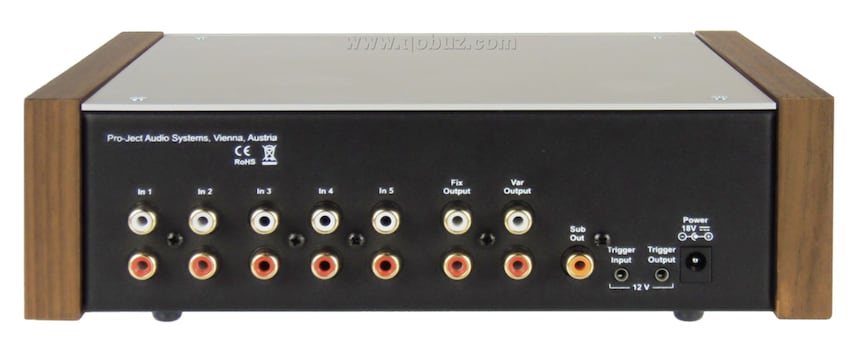
A trigger input and a trigger output, located next to the power outlet, allow for this device to be remotely controlled by—or to control remotely—another device.
Manufacturing
The Pro-Ject Pre Box DS2 is carefully designed, and the electronic circuit board is linked to the front keys, as well as to the Alps’ motorized volume potentiometer, through wire tapes similar to what you can find in a computer.
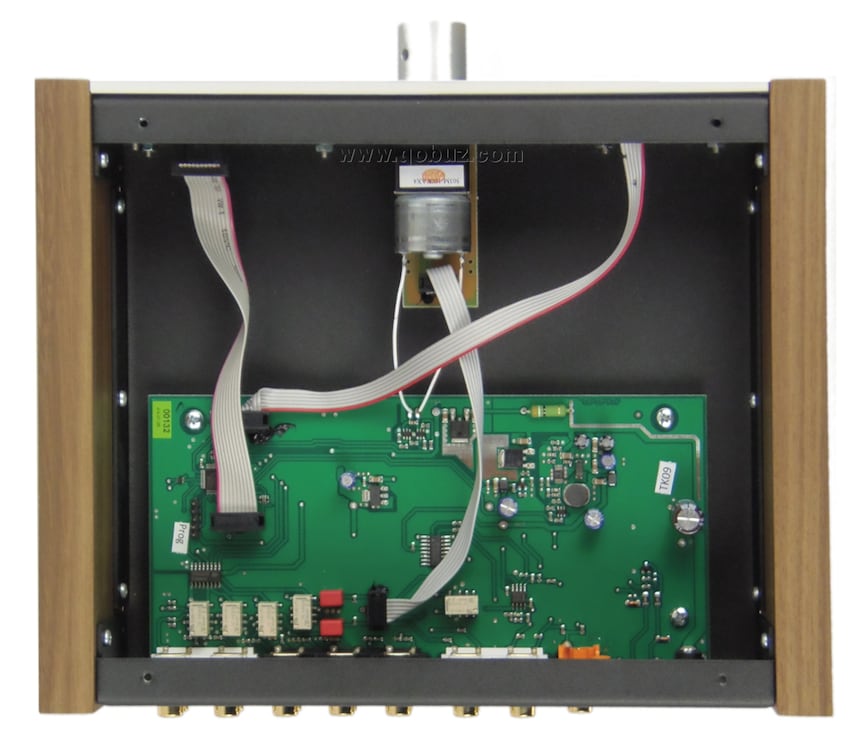
You will find few elements on the main board, which made it possible to the manufacturer to make room for large maps. The power supply, filtered by a 470 μF/35V capacitor on arrival, sits near the input and output plugs, and the motor rotation control systems are located nearby.
You can find a LM317MG adjustable positive voltage regulator, supplying a +15V voltage, being inverted into a -15V voltage by a Texas Instruments TPS54060 switching converter. These symmetrical voltages of ±15V will power the different analog circuit boards so that the analog signals are able to keep a 0V reference voltage.
An ST78M05 +5V regulator will control the motor’s and input relays’ supply voltages, whereas a 3.3V model will run the STM32F03D microcontroller and the gain change circuit, a Siliconix DG412DY quad analog switches network whose controls also run at 3.3V, while the analog part is powered at ±15V.
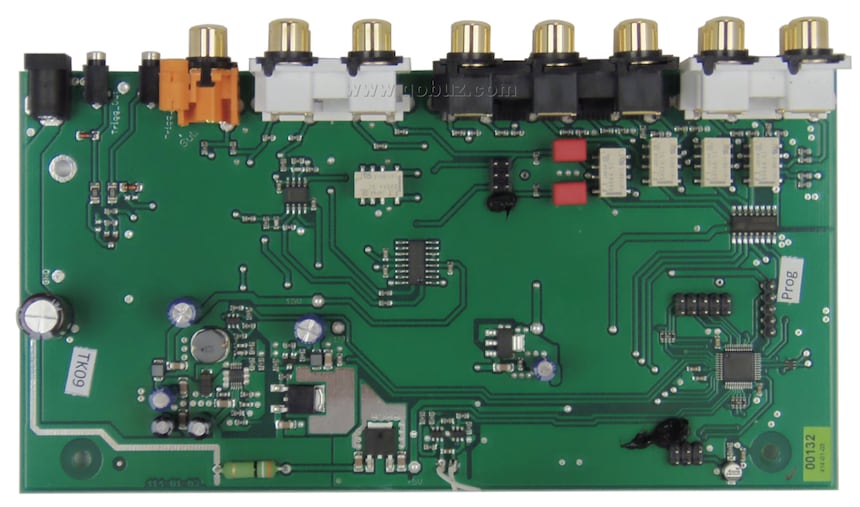
The input signals are commuted by relays controlled by a ULN2003 circuit (an array of transistors) which are then run to the volume potentiometer through Wima 2.2 μF film capacitors. A Burr-Brown OPA1688, a low-noise dual-supply amplifier able to work at 32 Ω of impedance (i.e. the impedance of a pair of headphones), is used to amplify them.
As for the subwoofer output, it is created by the passive summation of the two channels through capacitors and is devoid of any low-pass filtering. This minimalistic solution will force you to only use this output with a subwoofer equipped with a signal filtering input if you want optimal results. If not, you will send the entirety of the frequency range, which will however be limited by the bass speaker itself.
Sound
Linked to a DAC equipped with a Cirrus Logic CS4398 chip used without a low-pass filter after conversion, and wired to active speakers multi amplified by this reviewer, the Pre Box DS2 Analogue offers a musical restitution which perfectly highlights the richness and dynamics of Richard Strauss’ symphonic poem A Hero’s Life, performed by the Tonkunstler Orchestra conducted by Yutaka Sado (in Hi-Res 24 bit/192 kHz played on the new Desktop Qobuz). We minutely follow the solo violin symbolizing the Hero’s Partner in the scene depicting her, whereas the exuberant orchestral performances, characteristic of the composer, roll out in a loud and captivating musical flow, and the less expansive sections are no less joyful and spellbinding.
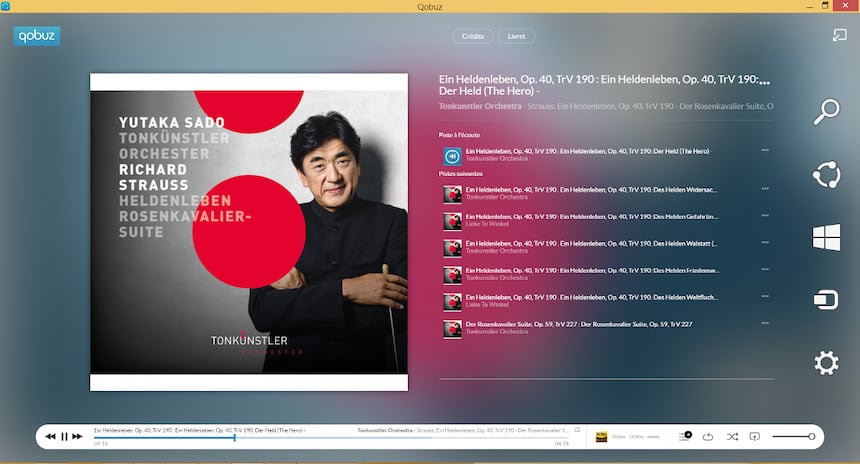
The Pre Box DS2 Analogue behaves as well with the interpretation of Schubert’s Impromptu No.3 D899 performed by
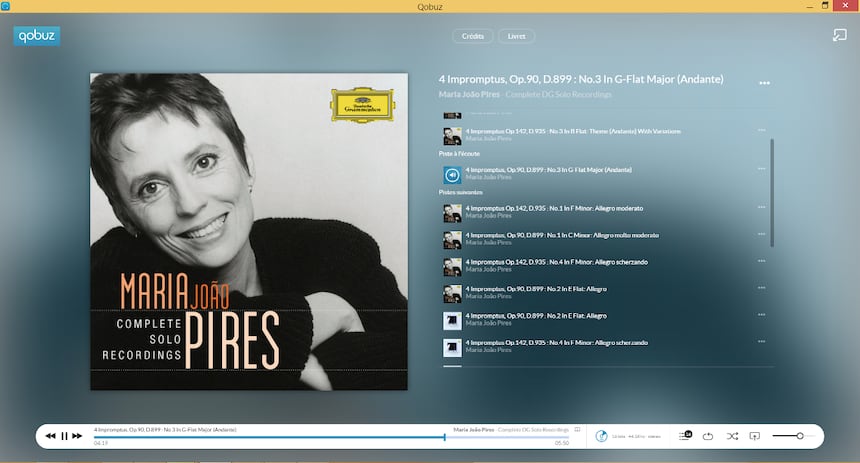
As for Julien Doré’s Porto-Vecchio from the album &, the title is reproduced with great density and control, even at low level, with an excellent spacialization which highly benefits from this song’s many sound effects.
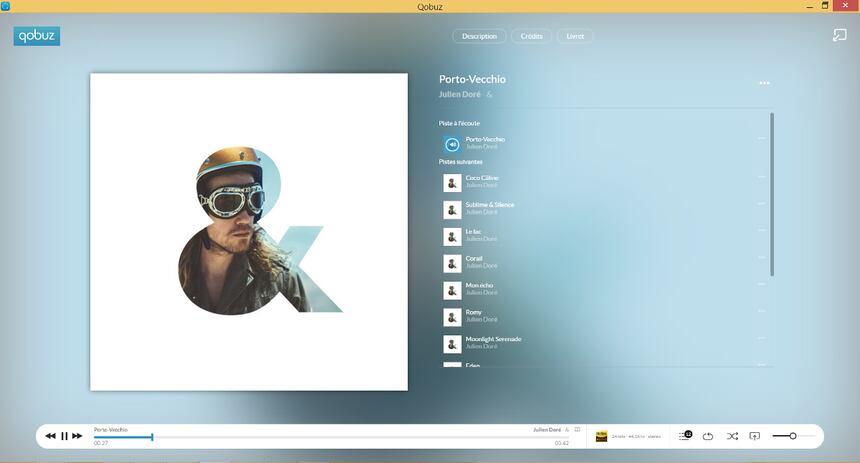
With Renaud’s song J'ai embrassé un flic from the album Renaud, we also notice a great sense of spacialization. The sounds soars freely and easily, which matches perfectly this light and crispy title—as well as the other ones on the album, by the way.
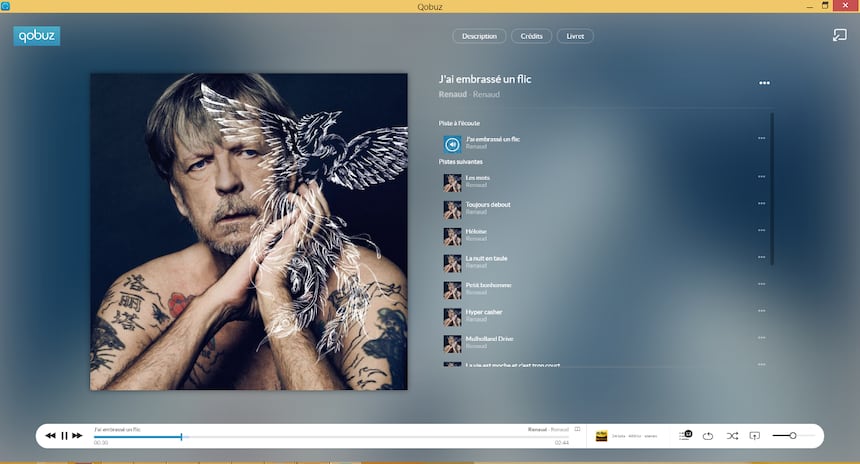
To conclude, we can say that the Pro-Ject Pre Box DS2 Analogue’s primary quality is its neutral sound and its ability to make the listener forget it’s there in order to focus on the sources wired to it. It commutes them and controls their volume with an absolute transparency, before transmitting their sound to an amplifier, a power amplifier or active speakers.
Audio Marketing Services (importer)
If you are a manufacturer, importer, retailer or key player in the digital music industry and wish to contact us, you can do it through the following email address:newstech@qobuz.com
If you’re enthusiastic about the Hi-Fi Guide column and wish to contact us, you can do it through the following email address:rubriquehifi@qobuz.com
Translated by Damien Izabelle


